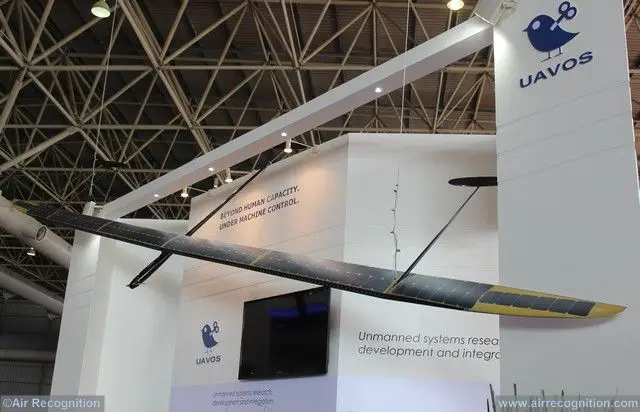Breaking news
UAVOS unveils Apus HAPS UAV at LIMA 2017.
| a | |||
|
|
|||
|
LIMA 2017
Langkawi International Maritime & Aerospace Exhibition 21 - 25 March 2017 Langkawi Airport - Malaysia |
|||
|
|
|||
|
UAVOS unveils Apus HAPS UAV at LIMA 2017
|
|||
|
One of the big hits at the 14th Langkawi International Maritime and Aerospace Exhibition is an unmanned Apus solar powered aircraft developed by the Silicon Valley, California - based company UAVOS INC. Apus High Altitude Pseudo-Satellite (HAPS) with active wing control is the main exhibit by UAVOS INC. Apus atmospheric satellite is unique due to its active control of an ultra-high elongation flexible wing.
|
|||
|
|
|||
 UAVOS' Apus High Altitude Pseudo-Satellite aircraft at LIMA 2017 UAVOS' Apus High Altitude Pseudo-Satellite aircraft at LIMA 2017 |
|||
|
|
|||
|
Such control is utilized on the basis of optical torsion and bending sensors integrated into the wing. The on-board controller analyzes the bend of the wing along the entire length and changes the angle of the wing attack in the desired area. This allows to automatically control the bend of the wing and perform roll control.
This innovative control approach allows to reduce the mass of the drone by at least 25 percent as compared to the classical scheme, and efficiently allows to abandon the spar, as well as to fly at low altitudes in conditions of strong turbulence. Using new control algorithms and a fundamentally new approach to design enables Apus drone to maintain functional stability at higher latitudes, thereby expanding the area of flights. Apus has a wing span of 34.5ft (10,5m) and a weigh of 33lb (15kg); the drone can perform flights at an altitude of up to 50000ft (15000m). Apus atmospheric satellite is intended for long-term monitoring at various latitudes around the globe, and can also serve as a telecommunication hub. UAVOS investor and board member, Vadim Tarasov adds, “The autopilot system that we have incorporated in our drones can be intergrated with any type of existing civil or military airafts and convert into a drone that operates in a fully automated manner and does not require human intervention.“ |
|||



















